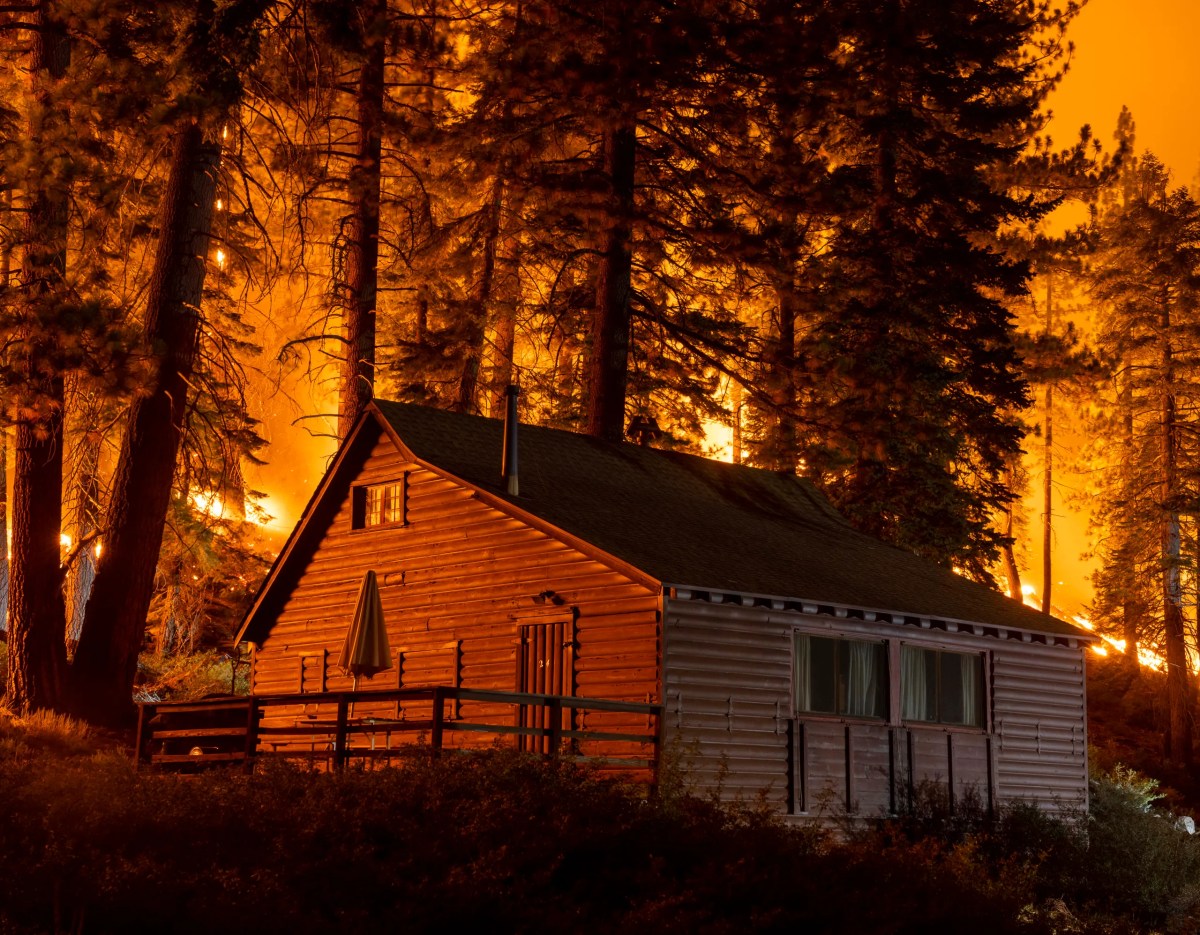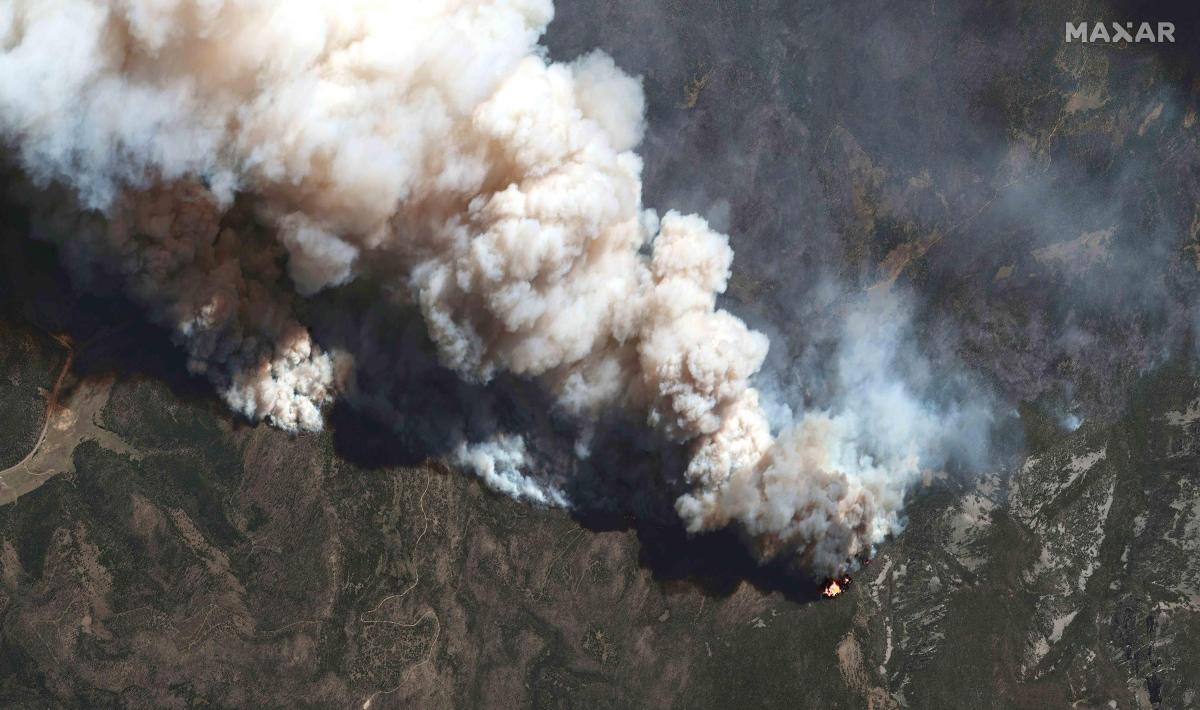‘God was with him’: Actor James Woods describes harrowing wildfire sets the stage for this enthralling narrative. Woods’ account of his brush with a devastating wildfire isn’t just a survival story; it’s a testament to resilience, faith, and the raw power of nature. We’ll explore his harrowing experience, examining the emotional arc of his narrative, the theological interpretations of his statement, and the lasting impact of the wildfire.
Actor James Woods’ wildfire escape story, where he credits divine intervention, is truly gripping. It makes you appreciate the fragility of life, especially when compared to the intensity of a football match; check out the Confirmed line-ups | Spurs vs Liverpool to see who’s battling it out on the pitch. Woods’ experience highlights how unpredictable life can be, reminding us to appreciate both the big and small moments.
Prepare to be captivated by a story that blends personal trauma with profound spiritual reflection.
This article delves into the details of James Woods’ ordeal, analyzing his descriptive language and the emotional impact of his near-death experience. We’ll also discuss the broader implications of the wildfire, its environmental consequences, and the themes of survival and hope that emerge from Woods’ incredible story. By examining both the personal and societal impacts, we gain a fuller understanding of the devastation and the strength of the human spirit in the face of adversity.
James Woods’ Wildfire Escape: A Narrative Analysis
James Woods’ account of his harrowing escape from a wildfire offers a compelling narrative of survival against overwhelming odds. His story, framed by the phrase “God was with him,” provides insight into not only the intensity of the experience but also the spiritual and emotional resilience of the human spirit in the face of disaster. This analysis will explore the structure of Woods’ narrative, the theological implications of his statement, the environmental and social consequences of the wildfire, and the themes of resilience and hope that emerge from his account.
James Woods’ Personal Account: Narrative Structure

Woods’ narrative unfolds chronologically, building suspense and emotional intensity. The account begins with a sense of normalcy, perhaps even idyllic, before escalating into a terrifying struggle for survival. Key turning points include the initial realization of the fire’s proximity, the desperate attempt to escape, and the eventual safe arrival. The language shifts from descriptive and calm to urgent and frantic, reflecting the escalating danger.
Actor James Woods’ wildfire escape story, where he said “God was with him,” highlights the power of faith in the face of adversity. It’s a stark contrast to the excitement of a completely different kind of event: check out how a Professional Women’s Hockey League game draws sold-out crowd , showcasing a different kind of triumph. Woods’ experience reminds us that even amidst chaos, there’s often a sense of miraculous survival, much like the collective energy of a sold-out hockey game.
Imagery of flames, smoke, and the chaotic scene effectively conveys the fear and desperation he experienced. The suspense is heightened by the uncertainty of his escape, leaving the reader in a state of anxious anticipation until the moment of safety is reached. Woods’ emotional state shifts from calm observation to panic, fear, and finally, relief and gratitude.
The chronological order of events can be summarized as follows: initial awareness of the fire; assessment of the situation and decision to flee; the frantic escape through smoke and flames; the moments of intense fear and near-misses; the eventual arrival at a place of safety; reflection on the experience and expression of gratitude.
The Phrase “God Was With Him”: Theological Interpretations

The phrase “God was with him” suggests divine intervention and protection. This statement speaks volumes about Woods’ personal faith and belief in a higher power. It implies a belief that his survival was not solely due to chance or skill but was guided by a divine force. Different theological perspectives offer varied interpretations. Some might view it as a literal act of God, while others might see it as a symbolic representation of faith, resilience, and the human spirit’s ability to overcome adversity.
Actor James Woods’ wildfire escape story, where he said “God was with him,” is a powerful testament to survival. It’s a stark contrast to the lighter fare of sitcom crossovers, like the upcoming Opposites attract in ‘Abbott Elementary’ crossover with ‘It’s Always Sunny’ , which offers a completely different kind of drama. But both stories highlight the unpredictable nature of life, reminding us to appreciate the moments of both intense struggle and unexpected joy.
Many accounts of survival from natural disasters share similar expressions of faith, highlighting the role of spirituality in coping with trauma and finding meaning in survival.
For example, numerous survivors of Hurricane Katrina expressed similar sentiments, attributing their survival to divine intervention or a feeling of being watched over by a higher power. This highlights a common human response to facing immense challenges – a reliance on faith and spiritual belief.
The Wildfire’s Impact: Environmental and Social Consequences

Woods’ account, while focused on his personal experience, implicitly reveals the devastating impact of the wildfire. The environmental damage is substantial, including the destruction of vegetation, wildlife habitat loss, and air pollution. The social and economic consequences are equally significant, potentially affecting livelihoods, housing, and the overall well-being of the community. The immediate effects are obvious, while the long-term consequences, such as soil erosion and ecological imbalances, might not be immediately apparent but are nonetheless profound.
| Damage Type | Description | Impact on Environment | Impact on People |
|---|---|---|---|
| Habitat Loss | Destruction of vegetation and wildlife habitats. | Loss of biodiversity, disruption of ecosystems. | Loss of resources, potential food shortages. |
| Air Pollution | Release of smoke and harmful particulates into the atmosphere. | Respiratory problems in wildlife and humans, acid rain. | Respiratory illnesses, health problems. |
| Soil Erosion | Loss of vegetation cover leading to soil erosion. | Desertification, water contamination. | Loss of arable land, economic hardship. |
| Property Damage | Destruction of homes and infrastructure. | Disruption of natural landscapes. | Homelessness, financial losses, displacement. |
Resilience and Recovery: Themes of Survival and Hope, ‘God was with him’: Actor James Woods describes harrowing wildfire

Woods’ story powerfully illustrates the human capacity for resilience and the strength of the human spirit. His account highlights the importance of quick thinking, decisive action, and unwavering determination in the face of overwhelming odds. Moments of hope emerge from his eventual escape and his subsequent reflection on the experience. These moments underscore the possibility of recovery and the importance of gratitude even after a traumatic event.
- Quick thinking and decisive action in the face of danger.
- Maintaining a calm demeanor amidst chaos.
- Prioritizing self-preservation and escape.
- Seeking help and support when needed.
- Expressing gratitude for survival.
Many other accounts of survival from similar disasters share similar themes of resilience and hope. The ability to find strength in adversity and to maintain a positive outlook despite trauma is a common thread in many stories of survival.
Visual Representation: Illustrating the Experience
One scene vividly depicts Woods standing at the edge of his property, the sky a terrifying orange-red, smoke choking the air, the heat intense on his skin. The air crackles with the sound of crackling flames, the scent of burning wood and smoke filling his nostrils. His face is streaked with soot, his eyes wide with fear, yet determination etched in his jawline.
He clutches a few belongings, his body tense, ready to flee.
Before the fire, the scene might have been one of peaceful tranquility: a clear blue sky, lush greenery, the gentle sounds of nature. Afterward, a desolate landscape of ash and charred remains, a stark contrast to the vibrant life that once existed. The air, once fresh and clean, now hangs heavy with the acrid smell of smoke.
The feeling of helplessness is palpable in the description of the roaring flames, the billowing smoke obscuring visibility, the intense heat making escape seem impossible. The sounds of crackling flames, the desperate cries of trapped animals, and the wind carrying embers intensify the fear and urgency of the situation. The overwhelming sense of heat and the taste of smoke further amplify the sensory experience of terror and despair.
Final Thoughts: ‘God Was With Him’: Actor James Woods Describes Harrowing Wildfire
James Woods’ harrowing wildfire experience, recounted in his powerful statement, “God was with him,” offers a compelling blend of personal survival and spiritual reflection. His story transcends the immediate disaster, highlighting the enduring human capacity for resilience and the search for meaning in the face of overwhelming adversity. The details of his escape, the environmental devastation, and his ultimate survival serve as a reminder of both nature’s destructive power and the enduring strength of the human spirit.
Woods’ narrative leaves a lasting impression, prompting reflection on faith, survival, and the profound impact of natural disasters.
FAQ Overview
What type of wildfire was it?
The specific type of wildfire isn’t detailed in Woods’ account.
Where did the wildfire take place?
The location of the wildfire is not specified in the provided Artikel.
Did James Woods suffer any injuries?
The Artikel doesn’t mention specific injuries sustained by James Woods.
What was the long-term impact on the environment?
This requires further research beyond the Artikel’s information.
